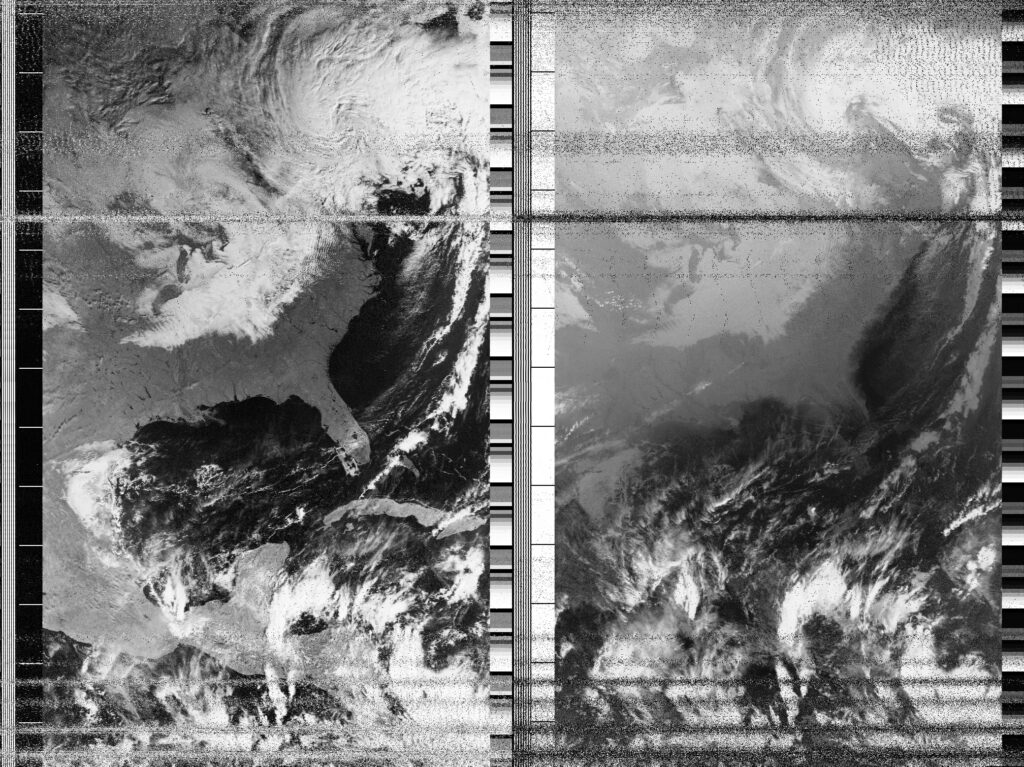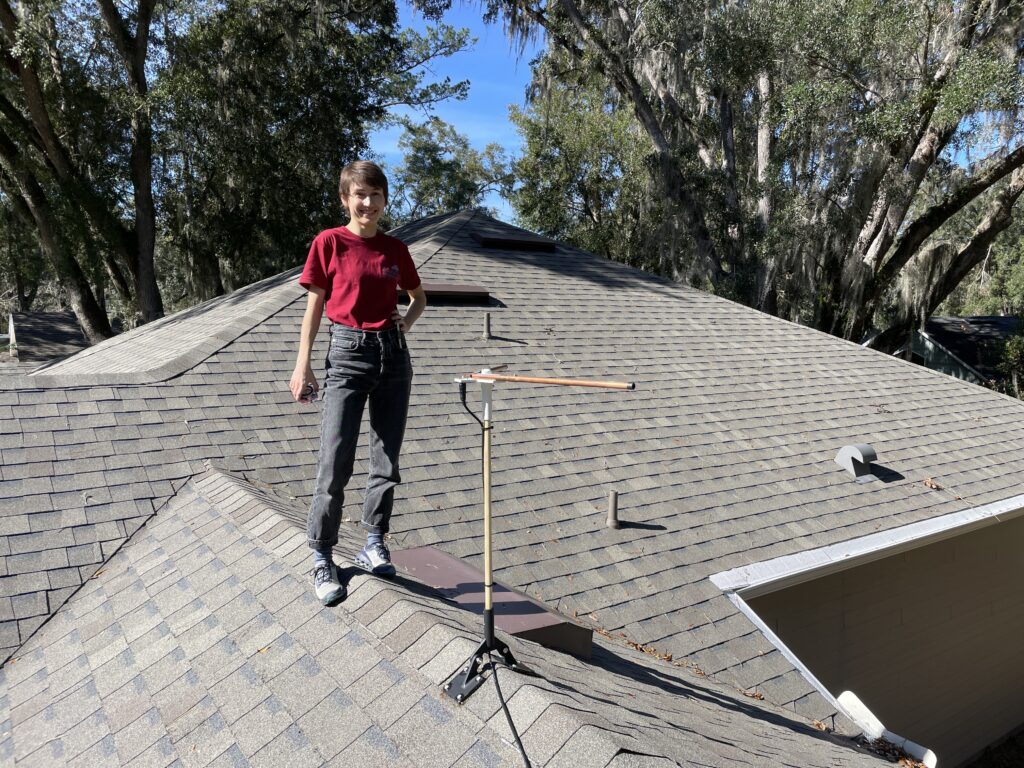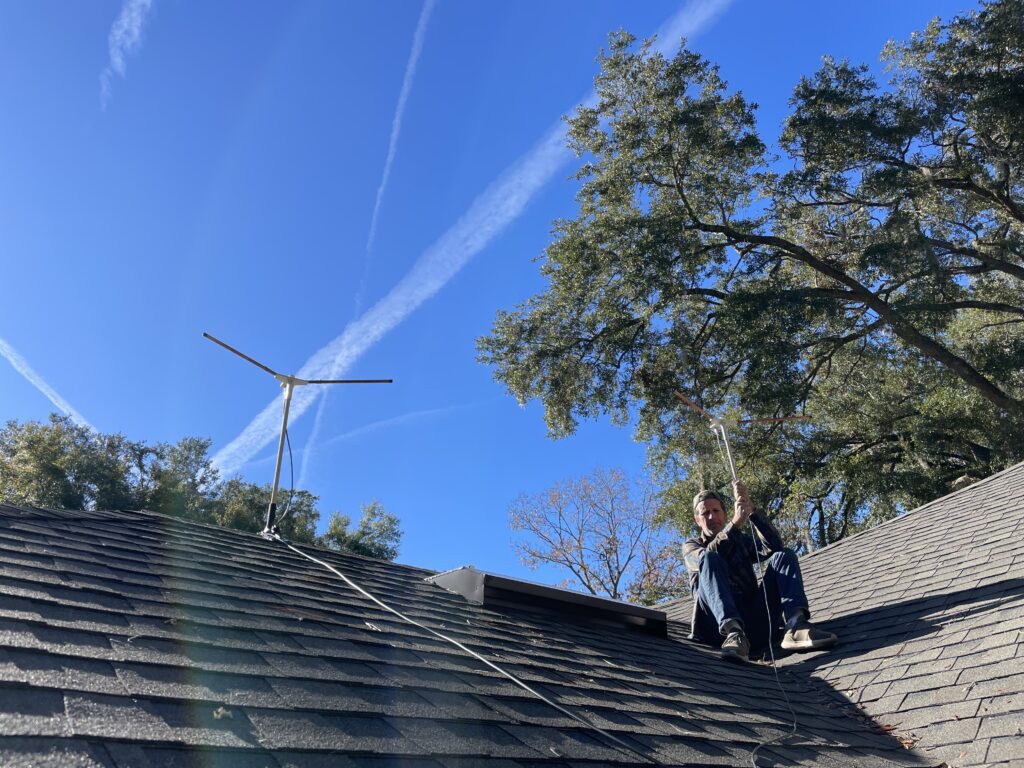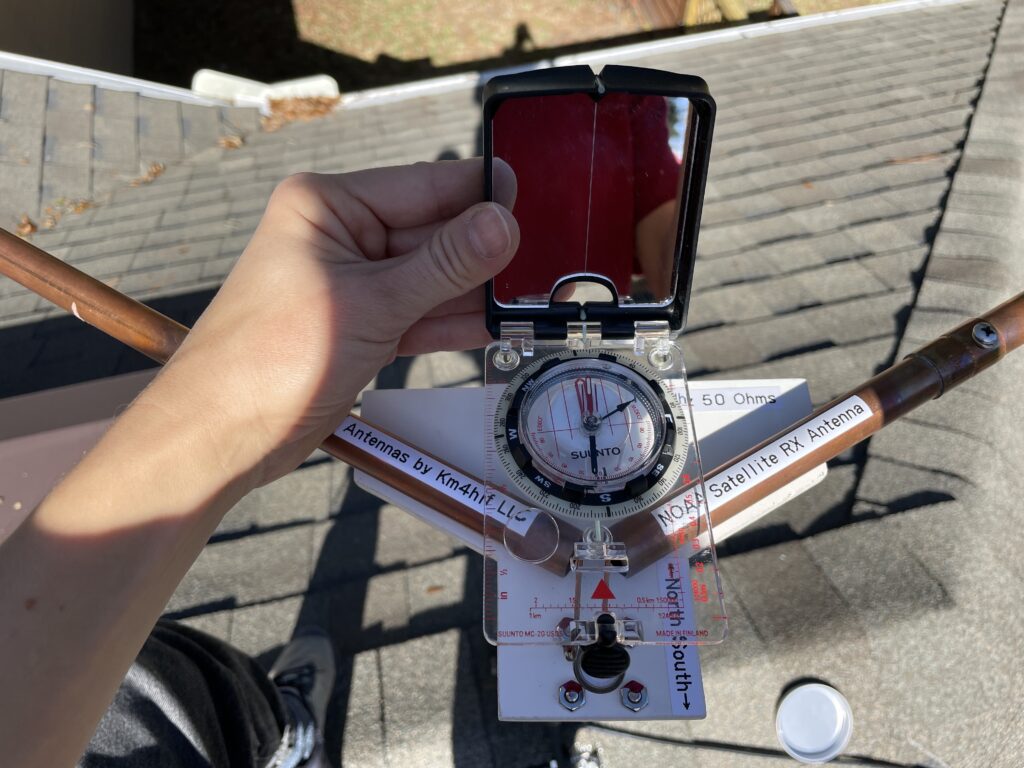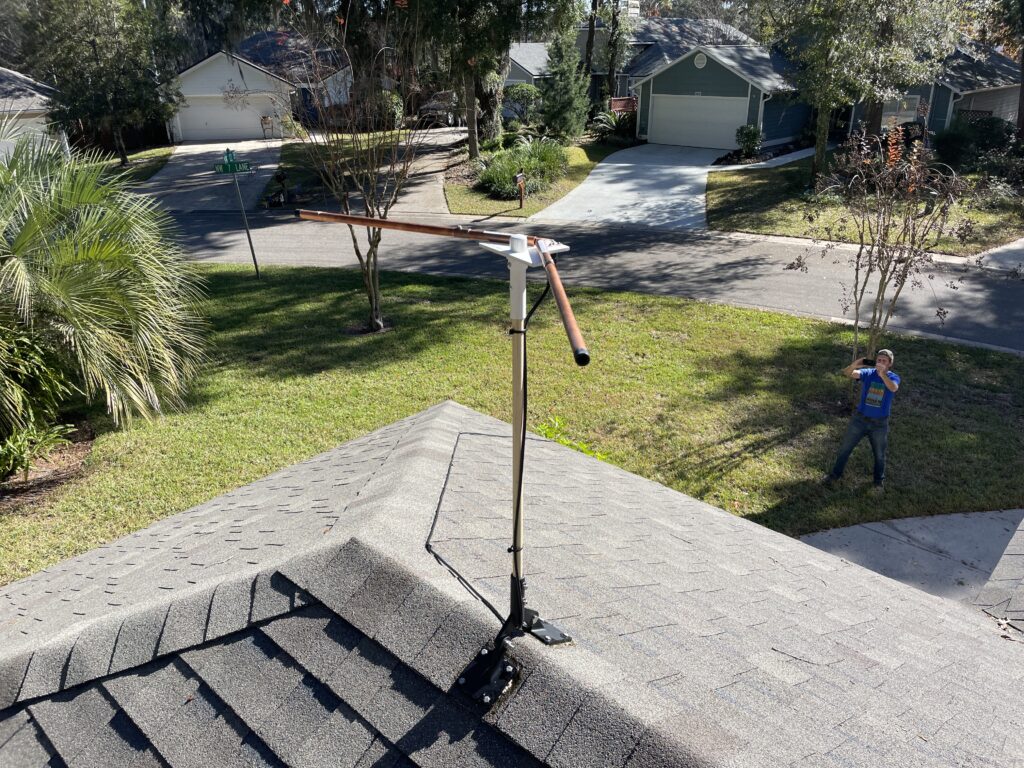Local Date
1 January 2025Local Time
10:33Location
Gainesville, FloridaCountry or Territory
United StatesContributor
Filip Shatlan and Diana EngelmannSatellite
NOAA-19Archive ID
Coordinates
Automatic Ground Station
Today marks the official permanent installation of the Gainesville Automatic Satellite Ground Station on the roof! We did one more test of two AGS's (15 and 12) running in parallel and receiving the same satellite shortly after 10:30am from the roof. Both received stunningly clear images, even though the pass was only around 65 degrees at max elevation. One V-dipole was mounted on the permanent installation site, and Steve held the second. The former received an image with less interference, which made sense, given it had nothing around it to possibly affect the antenna's radiation pattern. After drilling a pilot hole through the PVC that holds the antenna to the (now waterproof) wooden mast, we used a wood screw to solidly connect the two. We stretched out the RG8X coaxial cable throughout the backyard to make sure there were no kinks, and screwed one end into the base of the antenna on the roof, using zip ties to hold the cable against the mast. Following one edge of the roof, we bolted the cable down with small cable brackets, and looped it under the garage door overhang, following the edge of the moulding around the door to the floor, where we hooked it under a piece of wood. Steve drilled away some of the wood on the inside part of the garage door corner, where we passed the cable through to the inside, testing the garage door could open and close without causing any friction. We then bracketed the cable to the moulding along the bottom of the garage wall to the corner where there is a work desk and a power plug. We had a good metre and a half of cable left, and gently looped this around twice. After the cable was stretched out and secured, we returned to the roof, where we oriented the V-dipole to 'true north' using a professional compass, which meant we had to apply a 6 degree West declination (based on the difference between magnetic North and true North from our position in Florida). One of us oriented the antenna with the compass while the other screwed the wooden mast tightly into the steel mount with two screws. We also wrapped the UHF connector at the end of the coaxial cable with some vinyl electrical tape to protect it from UV radiation and water damage. Back inside, we cleaned up the wood shavings, glue, and spare screws. As we didn't have any extra 3D print casings for the Florida AGS, we DIY-ed a small cardboard box, and hooked up AGS 15 in its corner. It lit up, and let us know that it was going to collect a NOAA-15 pass shortly before 7pm this evening!
